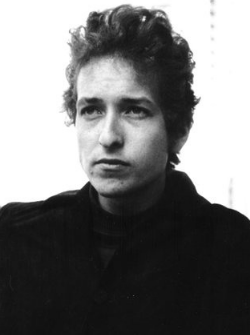
Bob Dylan poses for a portrait that appears on the cover of of his ‘Another Side of Bob Dylan’ album on Aug. 8, 1964 in New York City.
Billboard
Rob LeDonne
Perhaps it’s appropriate that the Bob Dylan Archive Collection, a treasure trove of over 100,000 items related to the icon, is located in Tulsa, Oklahoma. After all, this is a city located in the midst of the menacing tornado alley — and just in time for Dylan’s 78th birthday last week, Mother Nature sent a bevy of twisters to this part of the country. While Dylan did sing of “Shelter From the Storm” and about a “Hurricane” (the latter, of course, a nickname for the boxer Rubin Carter), it’s the phenomena of the swirling tornado — unmistakable, unstoppable, roaring through to irrevocably change the landscape, and a staple of the American experience — that arguably encapsulates not only Dylan’s rise but his place in national culture.
Meteorological comparisons aside, it’s that rise and permanent stature as not only a music legend but a distinctly towering American artist that is painstakingly chronicled here in Oklahoma, just northwest of Downtown Tulsa. It’s part of a broader vision of George Kaiser, a native Tulsan and extraordinarily wealthy financier whose Family Foundation saw fit that Dylan’s archives would be right at home in the city, if only for the fact that Tulsa is also home to the Woody Guthrie Center. Guthrie, another legendary American singer-songwriter who spoke of the plights and positive attributes of living in the U.S., was a major early influence on Dylan, and later fostered a relationship with him.
“We haven’t heard anything about what he thinks we’re doing here,” says Steve Higgins, the special projects manager at the Dylan Center, who joined its ranks after working with the Guthrie Center. Not that he’s surprised by the silence. While the center has a “great working relationship on an almost daily basis” with Dylan’s team, the only time they heard from the man himself was when initial plans were announced, and Dylan spoke of his pride of having his work displayed a short distance from the Guthrie Center and in an area so closely associated with the Native American people. The limited contact, however, is on brand for an artist who speaks so rarely in public that he says nary a word during live performances aside from what’s sung, and even decided to send in a speech when he was awarded the Nobel Prize for Literature in 2016 rather than accept in person.